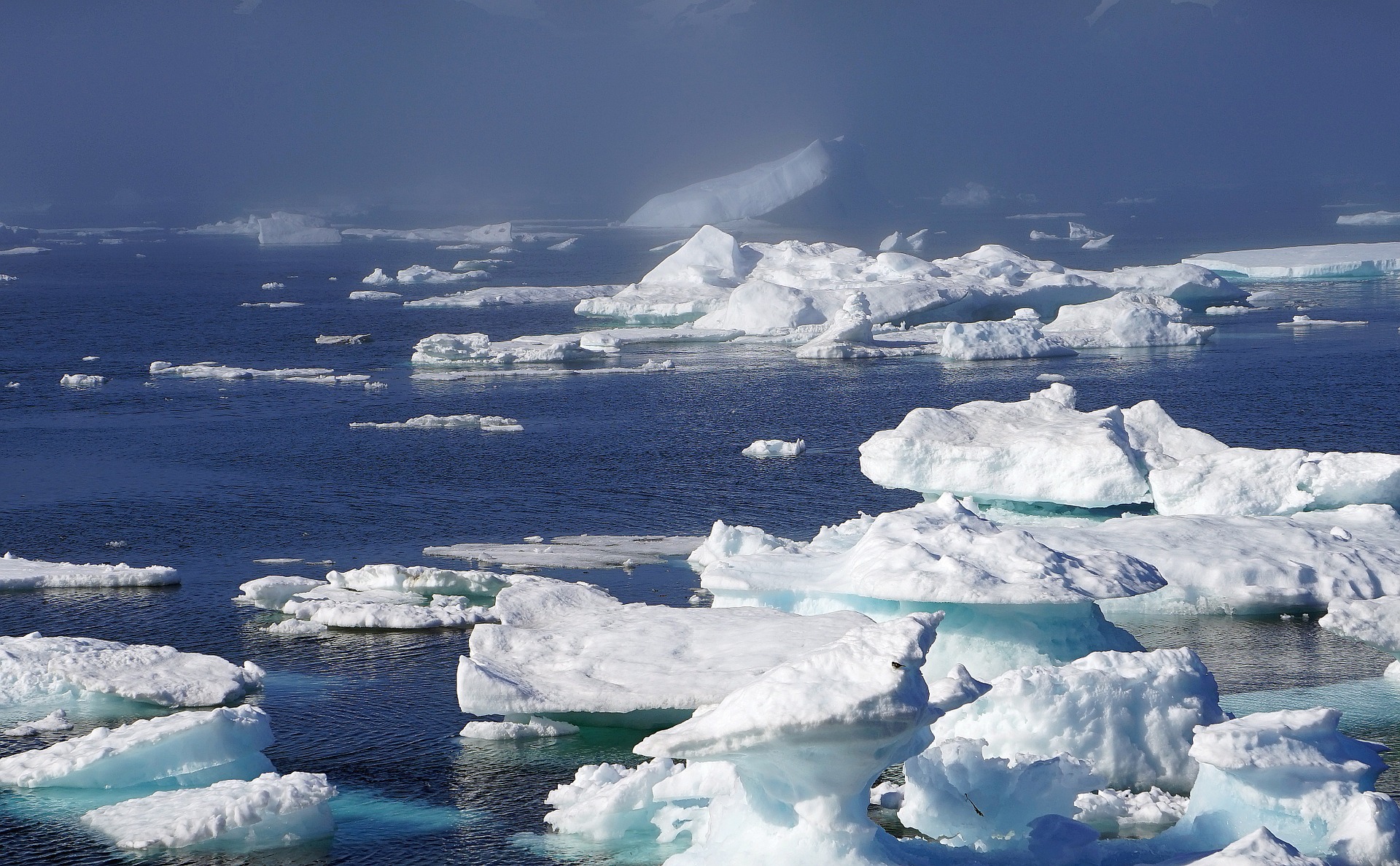 Earth & Space
Earth & Space
Warm waters hide in the unlikeliest of places – under the Arctic sea ice
The past three decades have experienced substantial warming of the Arctic Ocean. There has been a doubling in the heat stored in the deeper waters, which exposes sea-ice cover and climate to potentially grim consequences.

The Polar Regions are a central control and indicator of the Earth's climate. Ice and snow at the poles reflect solar radiation back into space, which helps to keep the Earth cool. However, in recent decades, air temperatures in the Arctic have been rising at twice the rate of anywhere else on the planet and sea ice is declining. As sea ice disappears, the polar region reflects less solar energy, allowing the Earth to absorb more heat. This gives rise to a vicious cycle of warming.
Sea ice grows when the surface of the Arctic Ocean freezes. These surface waters are relatively fresh (and therefore less dense) compared to the deeper, saltier (and therefore denser) waters. Throughout much of the Arctic Ocean, the deeper, saltier waters are actually warmer than the overlying fresh waters. In the present Arctic system, the relatively fresh surface water provides a barrier between the sea ice and the deeper, warmer water. It is critical to note that there is enough heat contained in these warm waters to entirely melt the overlying sea-ice pack. Presently this heat is trapped. However, it is of utmost importance for researchers to determine if this stability will last as the Arctic climate continues to change.
In this study, we analyze Arctic Ocean temperature and salinity measurements to examine how ocean properties are changing in context with sea-ice cover. In particular, we focus on measurements taken over the past three decades from icebreaker surveys and automated buoys. We document a striking ocean warming in one of the main basins of the interior Arctic Ocean (the Canada Basin). The warm water layer, which resides below the cooler surface ocean layer, has seen a two-fold increase in heat content over the past three decades.
The source of the increased ocean heat can be understood by first considering how the ocean waters circulate in this part of the Arctic. The Canada Basin has saltier (denser) surface waters at its southern geographic margins compared to its interior surface waters. These margins are also regions where sea ice melts back first every summer. This means these now ice-free waters receive the most solar warming. The prevailing winds push this solar-warmed denser water down from the surface to underneath the adjacent fresher surface waters. From there, they are swept laterally and deeper, helped by ocean circulation, into the interior Canada Basin. In this way, the warm waters responsible for the buildup of ocean heat originate hundreds of kilometers to the south of where they are found in the interior.
The question remains as to why the heat content in these interior basin waters has been increasing over the past three decades. Satellite observations tell us that the geographic margin regions, the portal for water on its way to the interior Canada Basin, are experiencing the fastest rate of sea-ice decline in the entire Arctic Ocean. Here, reduced sea-ice extents in recent years leave the surface ocean more exposed to summertime solar warming. This means more and more heat continues to be accumulated as Arctic winds and ocean circulation continue to sweep these steadily warming waters into the interior. As a result, the effects of sea-ice loss are not limited to the ice-free regions themselves, but lead to increased heat accumulation in the interior of the Arctic Ocean that can have climate effects well beyond the summer season.
The ultimate fate and implications of the increased ocean heat and continued sea-ice losses are uncertain. The conditions preventing the trapped ocean heat from escaping toward the sea ice are precarious under the multitude of complicated climate interactions. One particularly disconcerting relationship is that as sea ice declines, leaving more exposed ocean surface, winds are more able to supply the energy required to break the stability. Sustained monitoring and study of the evolving polar climate are vital to make reliable climate projections that are needed to stimulate mitigation and plan for a sustainable future.
Original Article:
M. L. Timmermans, J. Toole, R. Krishfield, Warming of the interior Arctic Ocean linked to sea ice losses at the basin margins. Sci Adv 4, eaat6773 (2018)Edited by:
Massimo Caine , Founder and Director
We thought you might like
Ocean acidification and its effects on coral reef growth
Jul 8, 2016 in Earth & Space | 3.5 min read by Rebecca AlbrightResetting nature’s clock: shifting seasons and species relationships
Sep 14, 2016 in Earth & Space | 3.5 min read by Stephen Thackeray , Sarah BurtheThe silent battle of young corals against ocean acidification
Oct 19, 2016 in Earth & Space | 4 min read by Taryn FosterFor polar bears the cost of living is rising
Mar 13, 2018 in Earth & Space | 4 min read by George DurnerMore from Earth & Space
Discovery of the first radiation belt beyond the Solar System
Jan 27, 2025 in Earth & Space | 3.5 min read by Juan Bautista Climent OliverOne million (paper) satellites
Jan 24, 2025 in Earth & Space | 3 min read by Ewan Wright , Andrew FalleVolcanic Ash: A Nutrient Boost for Reef-Building Corals
Sep 18, 2024 in Earth & Space | 4 min read by Frank Förster , Tom SheldrakeAmmonia Energy: A Call for Environmental Awareness
Aug 29, 2024 in Earth & Space | 3.5 min read by Matteo Bertagni , Robert Socolow , Amilcare PorporatoLikely increase in coral thermal tolerance at a Pacific archipelago
Dec 29, 2023 in Earth & Space | 3 min read by Liam LachsEditor's picks
Trending now
Popular topics


